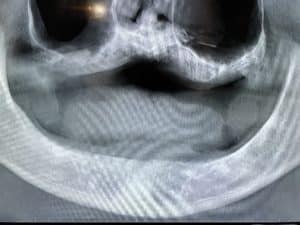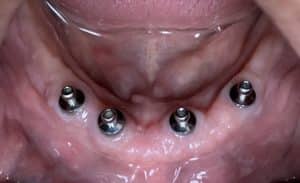Case Details
The patient currently wears an “old” lower complete denture and over time the denture has become loose due to the resorption of the alveolar bone as result from the natural aging process and from the consistent irritation of his current ill-fitting oral prosthesis. The patient’s concern are the costs and therefore for the time-being wants a solution that is both economical as well as achieving the task of preventing his denture from constantly moving around when he eats and speaks. Therefore, a bare minimum of 2 dental implants is placed into the lower jaw via a free-handed surgical approach so that the patient can still use his current complete denture and attach it to the dental implants. Once the dental implants are placed a denture conversion is performed to change his current complete denture to an overdenture which an implant oral prosthesis that is removable, implant-retained, and implant/tissue-supported. The placement of 2 implants (overdenture treatment option OD-1 and prosthetic treatment classification Rp-5 where it is primarily soft tissue supported) to support an oral prosthesis is considered as the entry-level oral prosthesis and can always be upgraded at a later time if the patient wishes.
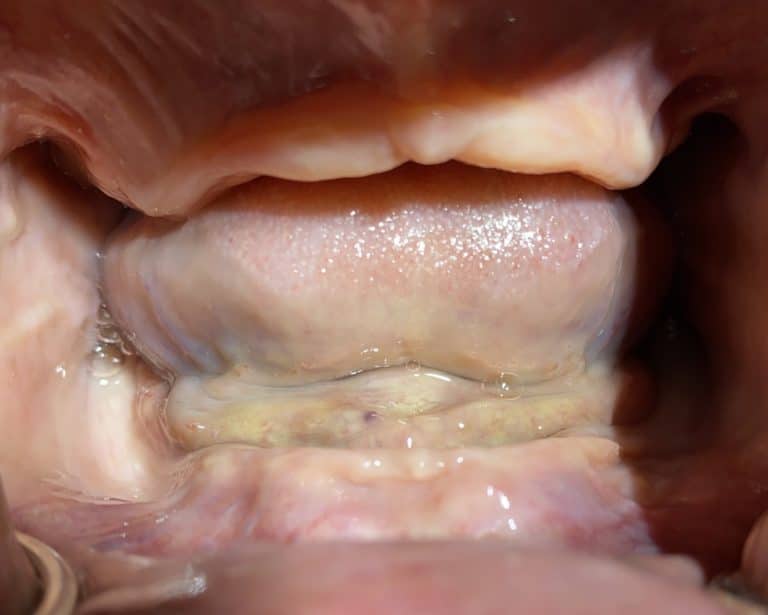
Before
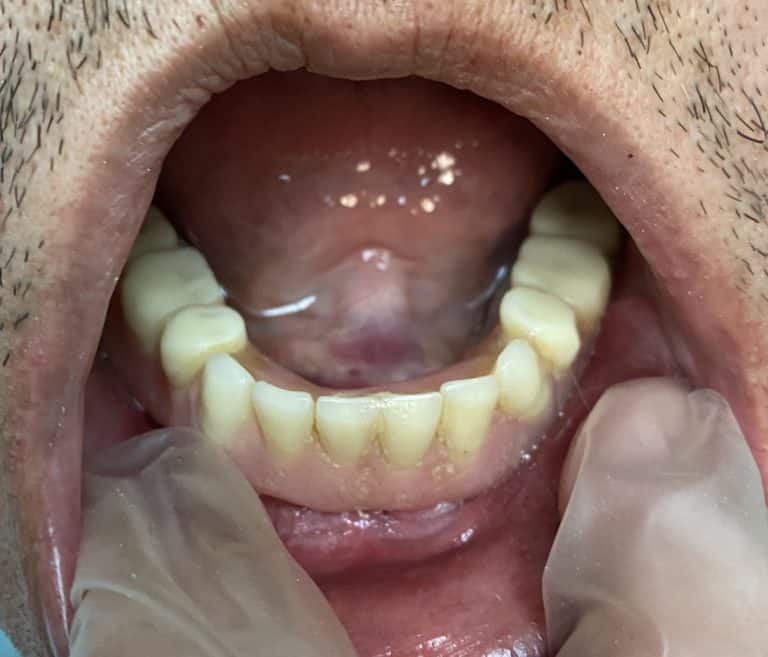
After
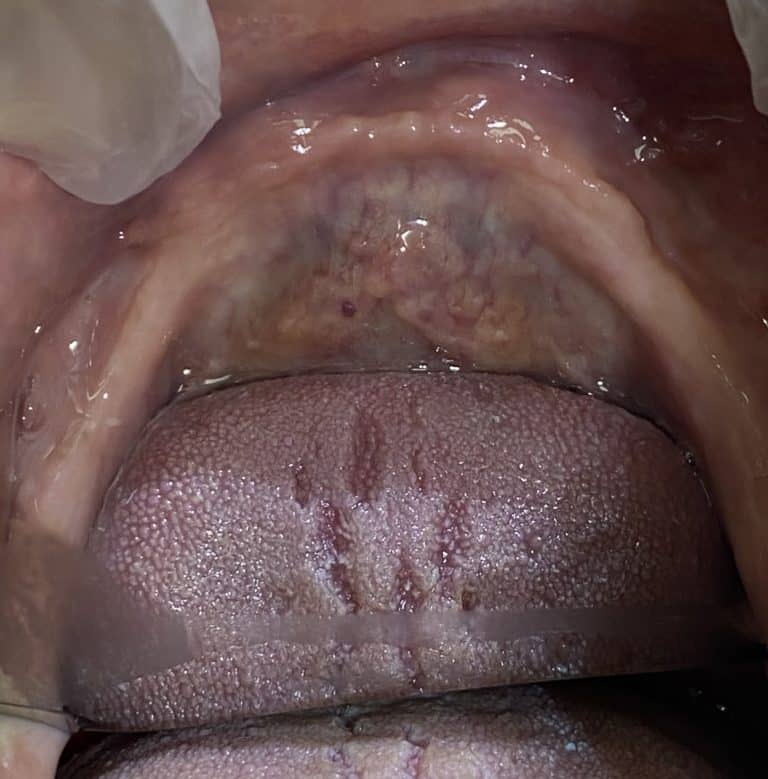
Before
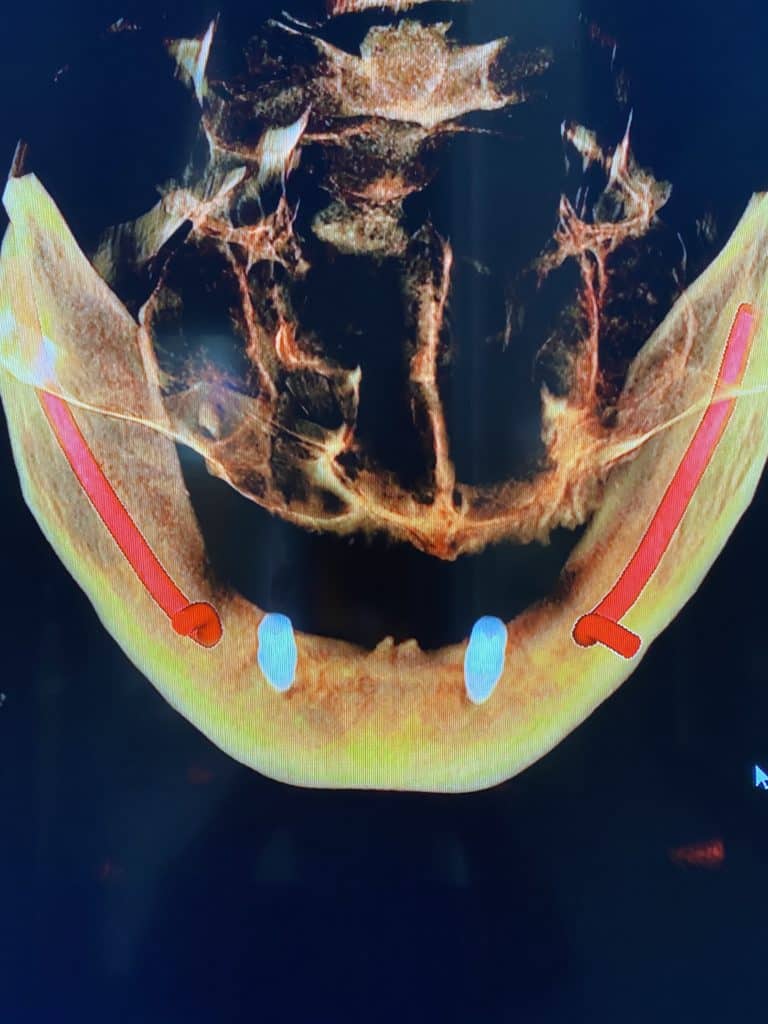
After
Description: After placement, the dental implants are clearly visible on a cone beam cat scan (CBCT) or 3D x-ray taken on the patient. Extensions are attached to the dental implants to easily illustrate the projectory or angulation of the dental implants. First, the placements of the 2 implants must be in the correct location, be parallel to each other, equal distance from the midline, and with the same height with respect to one another or else the retention, stability, and support will be compromised. In addition, damage to the implant prosthetic parts can also occur. Therefore, proper placement (position, angulation, and depth) for all dental implants in general is absolutely crucial.
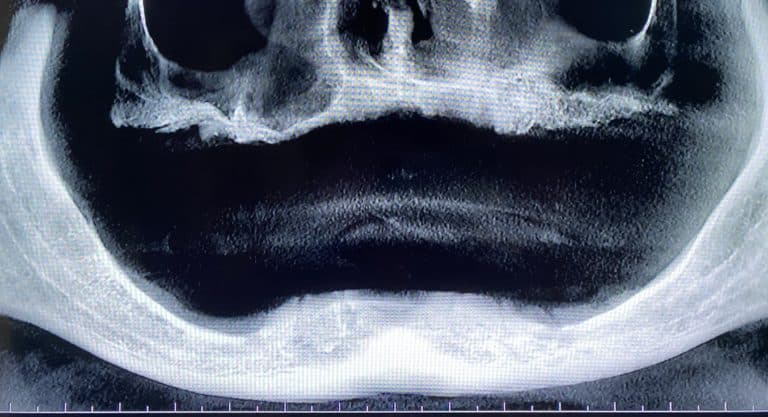
Before
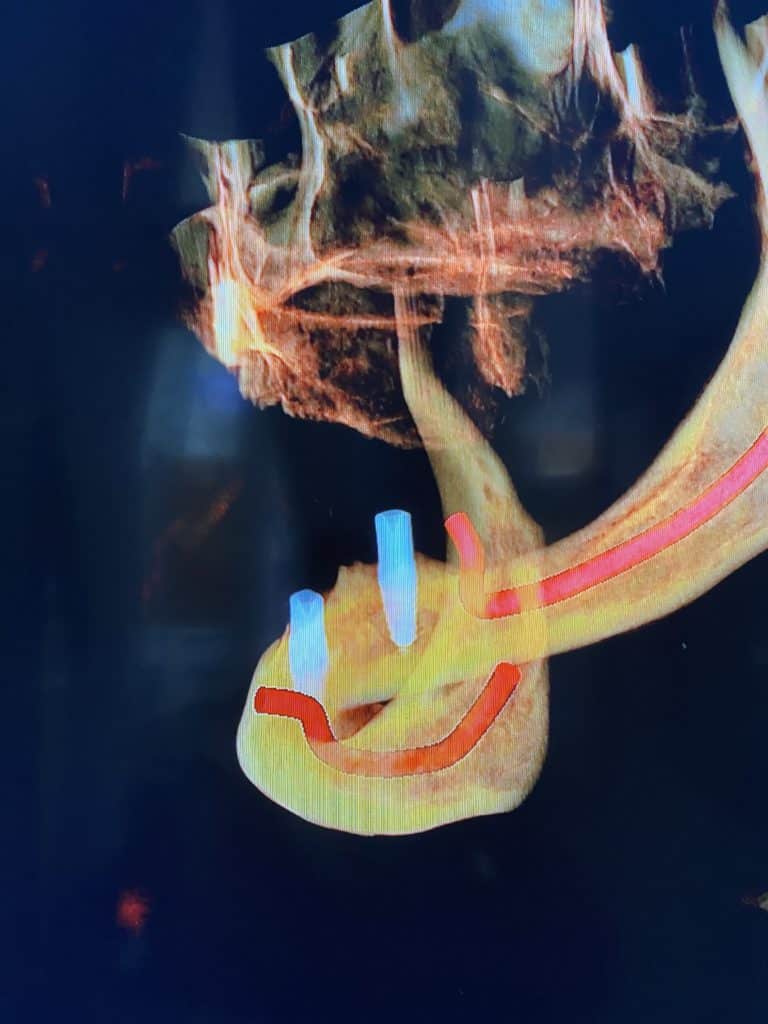
After
Description: The available bone within the lower mandible or jaw is scarce and so any dental implants that are placed can only be placed as inter-foraminal implants (between the nerve "exit holes" or mental nerve foramina). This nerve, or the mandibular inferior alveolar nerve, is shown in red and can be seen beneath only a shallow amount of alveolar bone in the posterior regions which is in insufficient amounts to accommodate or support any dental implants.
Before
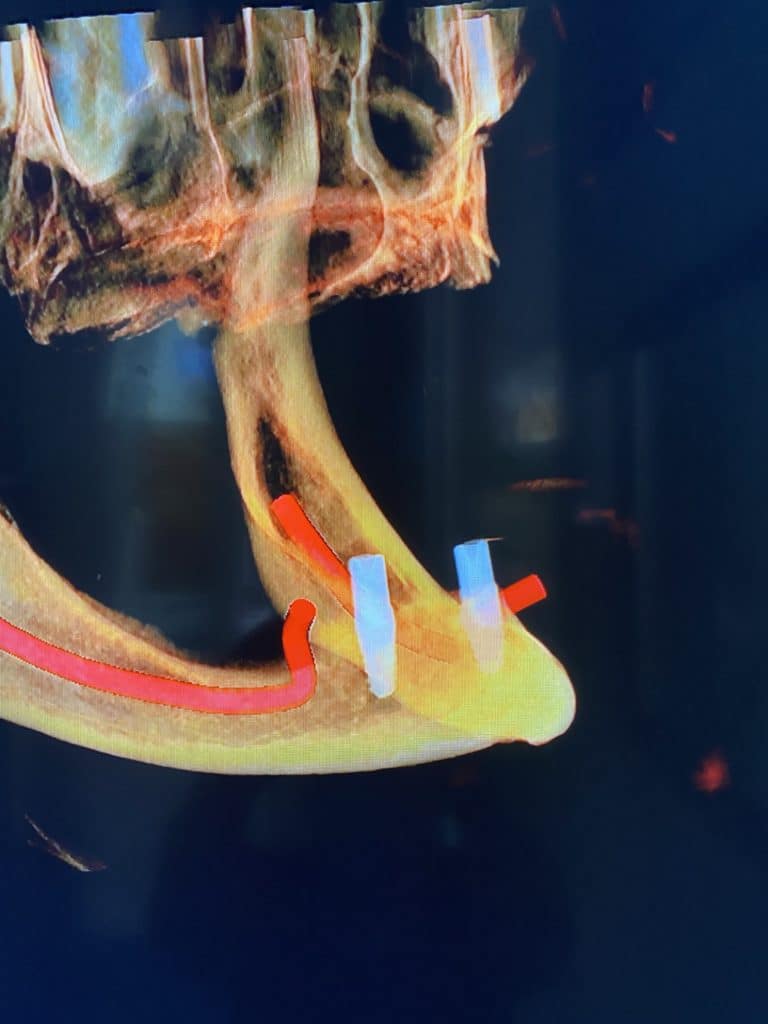
After

